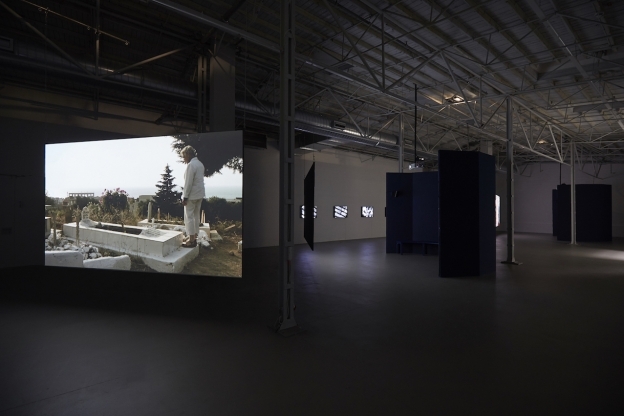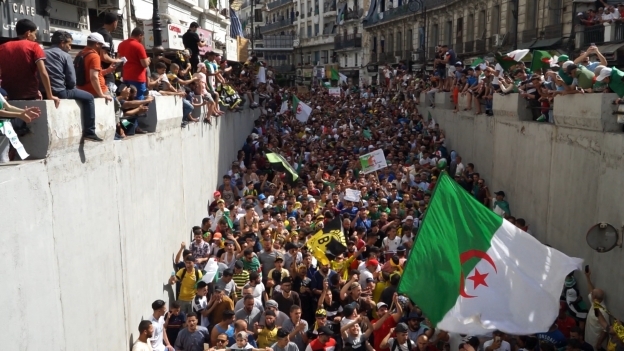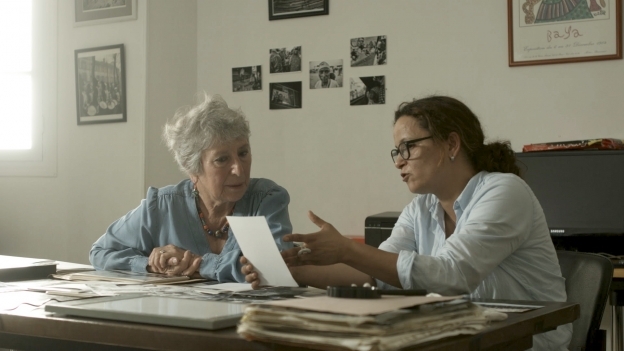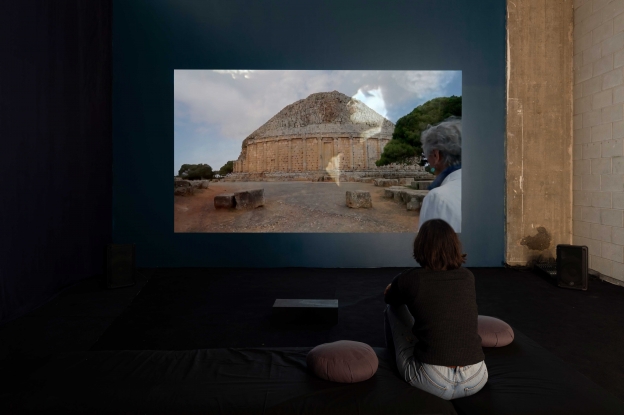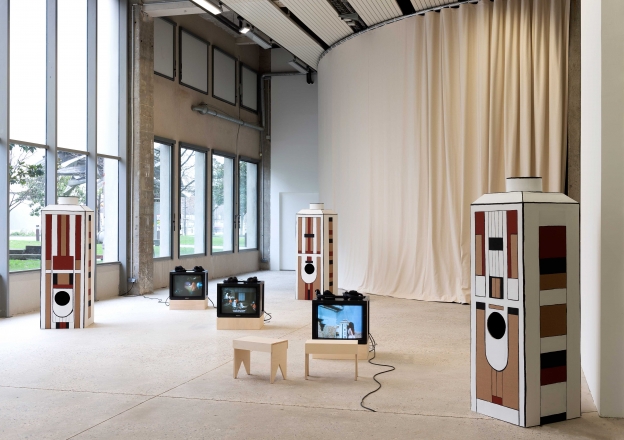Dans le Roman algérien - chapitre 3, Marie-José Mondzain saute le pas pour pénétrer l'image. Fidèle à son approche critique, la philosophe des images née en Algérie s'efforce de déceler le signifiant dans ses premières tentatives avortées d'accéder aux iconographies d'un roman national et familial. Les manifestations du Hirak apparaissent en contrepoint des investigations menées tout au long du film, et semblent constituer la porte d'entrée vers l'exploration de mémoires occultées. À travers une discussion autour du travail photographique de Louiza Ammi, ce chapitre est ainsi l'occasion de combler l'absence iconographique de la décennie noire, évoquée en creux dans les deux premières parties. L'analyse de séquences de La Nouba des femmes du mont Chenoua d'Assia Djebar par Ahmed Bedjaoui, producteur et critique de cinéma, vient nourrir ce réinvestissement historique. Ce film emblématique des prémices du cinéma algérien post-décolonisation se réapproprie l'écriture de l'histoire par le prisme de femmes de différentes générations, dont la parole donne corps à une mémoire trop souvent effacée.
La trame narrative se complexifie dans ce dernier volet, où s'entremêlent images d'archives, relectures contemporaines et présences manifestes de l'actualité. Se croisent ainsi acteurs du passé, du présent et de l'avenir d'une Algérie dont on devine les mutations, incarnées notamment par la slameuse Ibtissem Hattali, qui clos le chapitre en déclarant : « Aujourd'hui, le jour est venu ou la femme arrachera sa liberté ».
In the Algerian Novel - chapter 3, Marie-José Mondzain takes a further step to enter the image. Consistent with her critical approach, the Algerian-born philosopher strives to identify the meaning in her first failed attempts to access the iconographies of a national and family novel. The Hirak protests appear as a counterpoint to the investigations conducted throughout the film, and seem to provide the gateway to the exploration of hidden memories. Through a discussion on Louiza Ammi's photographic work, this chapter is an opportunity to rectify the iconographic absence of the Black Decade, which is mentioned in the first two parts. The analysis of sequences from the Assia Djebar's movie La Nouba des femmes du mont Chenoua, by Ahmed Bedjaoui, producer and film critic, feeds into this historical reinvestment. This film, which is symbolic of the beginnings of post-decolonization Algerian cinema, reappropriates the writing of history through the prism of women of different generations, whose words embody a memory that is too often overshadowed.
The narrative structure becomes more complex in this last part, where archival images, contemporary analysis and a visible presence of current events are intertwined. Thus, actors of the past, present and future are crossing paths, in an Algeria whose changes can be guessed, embodied in particular by the slammer Ibtissem Hattali, who closes the chapter by proclaiming: "Today, the day has come when women will snatch their freedom".

